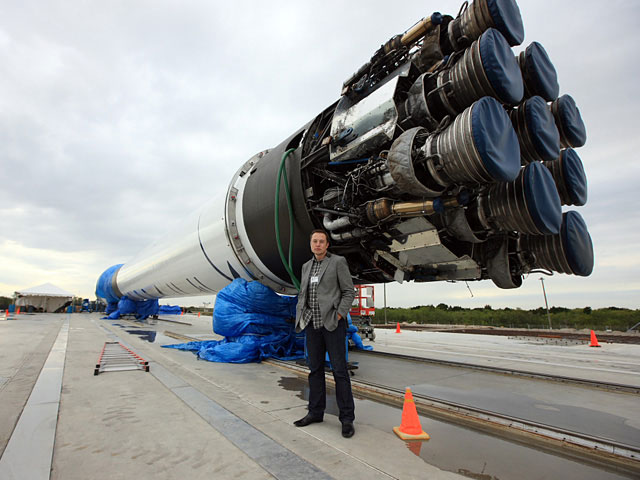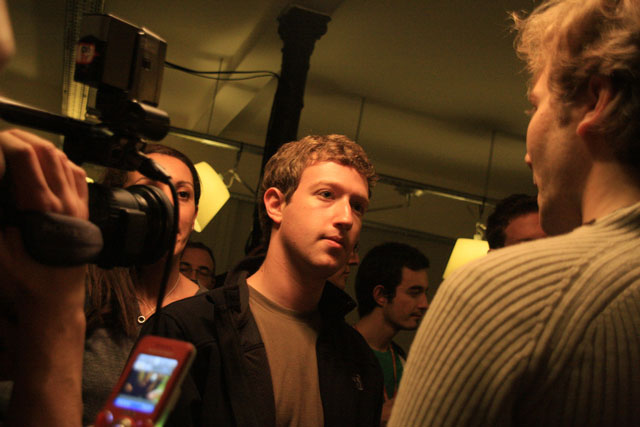
SpaceX and federal investigators are poring over a few milliseconds of data as they probe why a blaze destroyed a Falcon 9 rocket and satellite on a Florida launchpad two days before a scheduled flight.
The space exploration company founded by billionaire Elon Musk said Friday that it’s working to determine “causes and fixes” for the incident, which incinerated a satellite that Facebook planned to use to beam Internet access across a broad swath of Africa. Also unknown: the scale of damage to the SpaceX pad known as SLC-40 at Cape Canaveral Air Force Station, from which it has lobbed missions into orbit.
“We deeply regret the loss of Amos-6, and safely and reliably returning to flight to meet the demands of our customers is our chief priority,” SpaceX said in a blog post.
The accident occurred eight minutes before a scheduled test firing during a dress rehearsal for Saturday’s planned launch of the Israeli communications satellite. Data shows the “anomaly” started around the upper stage liquid oxygen tank, the company said.
The blast was a reminder of the peril inherent in space flight, which relies on controlled explosions to power payloads to orbit. But it wasn’t expected to dent Musk’s effort to shake up the staid launch industry or dim his goal of one day colonising Mars.
“Today’s incident — while it was not a Nasa launch — is a reminder that spaceflight is an incredible challenge, but our partners learn from each success and setback,” Nasa said in a statement on Thursday.
SpaceX said it began searching for the root cause of the accident immediately after the loss and is in the “early process” of reviewing about 3 000 channels of telemetry and video data covering 35 to 55 milliseconds. The Federal Aviation Administration, Nasa, the US Air Force and other industry experts are also involved in the probe.
Pre-launch accidents are “extremely unusual” for US spacecraft, Marco Caceres, a senior space analyst with Teal Group, said via phone. Since the rocket wasn’t operational at the time of the blast, the investigation will likely focus on external causes such as a fuel leak, he said.
If that’s the case, then SpaceX would probably face less disruption than last year, when its rockets were grounded for six months after a Falcon 9 bound for the International Space Station exploded minutes into flight, Caceres said.
Launch contracts
While the accident caused a Web frenzy because of the satellite’s Facebook connection, it may not prove more than a short-term setback for SpaceX, which has scheduled more than 70 launches representing US$10bn in contracts.
“It’s unfortunate that this happened. But the satellite for Facebook can be rebuilt pretty quickly,” Timothy Carone, an astrophysicist and teaching professor at the University of Notre Dame’s Mendoza College of Business. “SpaceX knows how to make vehicles, put payloads up there. I think the recovery from this will be pretty rapid.”
SpaceX is restoring another pad on the Florida cape. Launch Complex 39A is on track to be operational in November, and will be capable of supporting both Falcon 9 and larger Falcon Heavy launches, the company said. It also uses California’s Vandenberg Air Force Base for some missions.
“We are confident the two launch pads can support our return to flight and fulfill our upcoming manifest needs,” SpaceX said.

The destroyed satellite was intended to beam Internet service to sub-Saharan Africa as Facebook and Eutelsat team up to connect people in remote parts of the world. Facebook CEO Mark Zuckerberg was on his first trip to region when he got word of the accident.
“I’m deeply disappointed to hear that SpaceX’s launch failure destroyed our satellite that would have provided connectivity to so many entrepreneurs and everyone else across the continent,” Zuckerberg said in a post Thursday. “We remain committed to our mission of connecting everyone.”
Saturday’s launch was to be the ninth of the year for SpaceX, which had settled into a steady tempo of flights following the 2015 accident. That failure was linked to a two-foot-long, inch-thick strut that snapped in a liquid oxygen tank.
Musk’s Hawthorne, California-based company has shaken up the space industry by introducing cost competition and successfully landing rocket boosters to be reused. It has won contracts with Nasa to ferry cargo and crew to the International Space Station and agreements with commercial satellite companies to send satellites into orbit.
The venture has done thorough investigations of its accidents in the past and should be able to learn from this incident, Eric Stallmer, president of the Commercial Spaceflight Federation, said in an interview.
“SpaceX isn’t going anywhere,” Stallmer said. “SpaceX has a tremendously reliable product that provides reliable access to space. They’ll be launching as soon as possible, I’m confident.” — (c) 2016 Bloomberg LP




